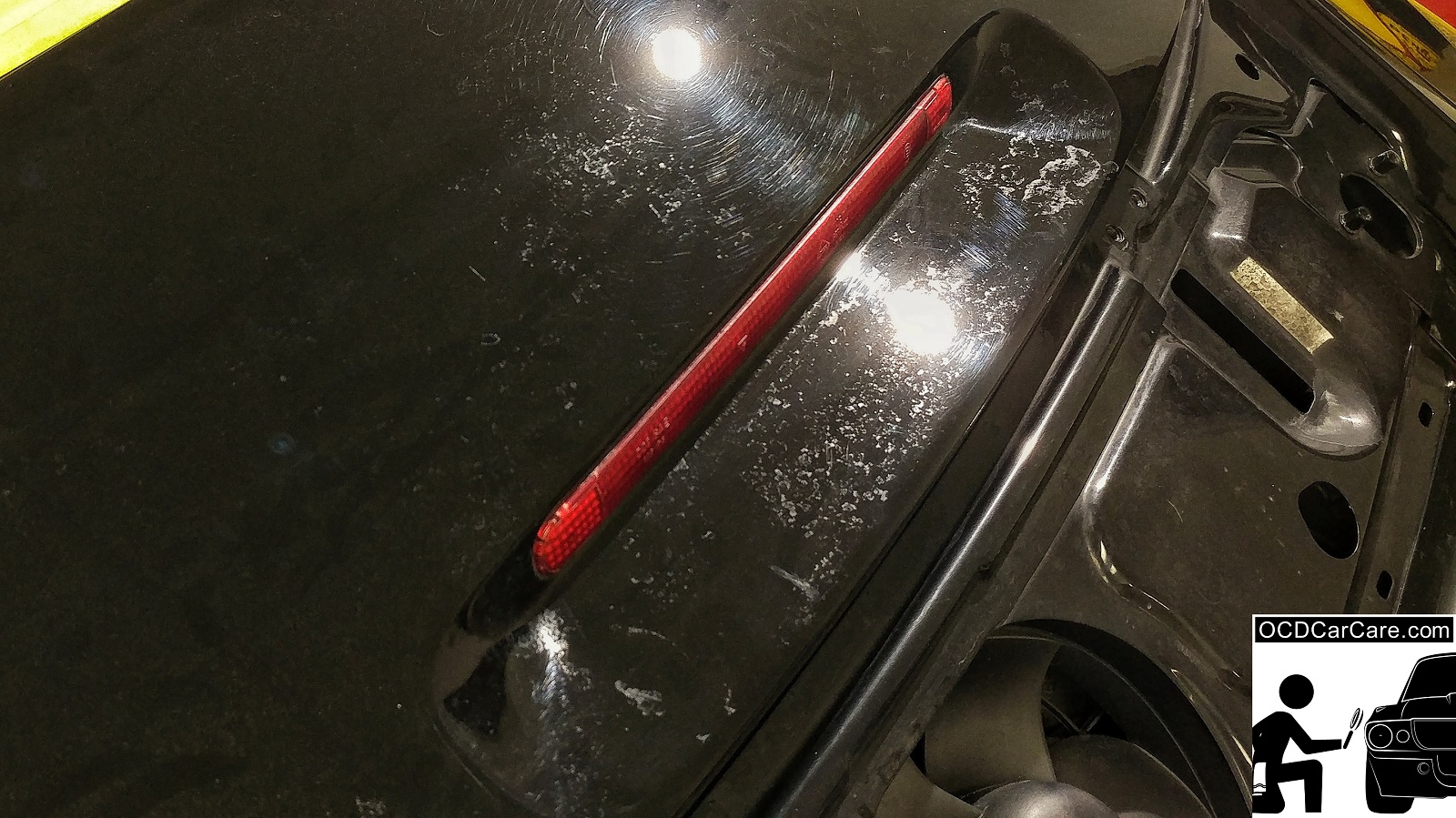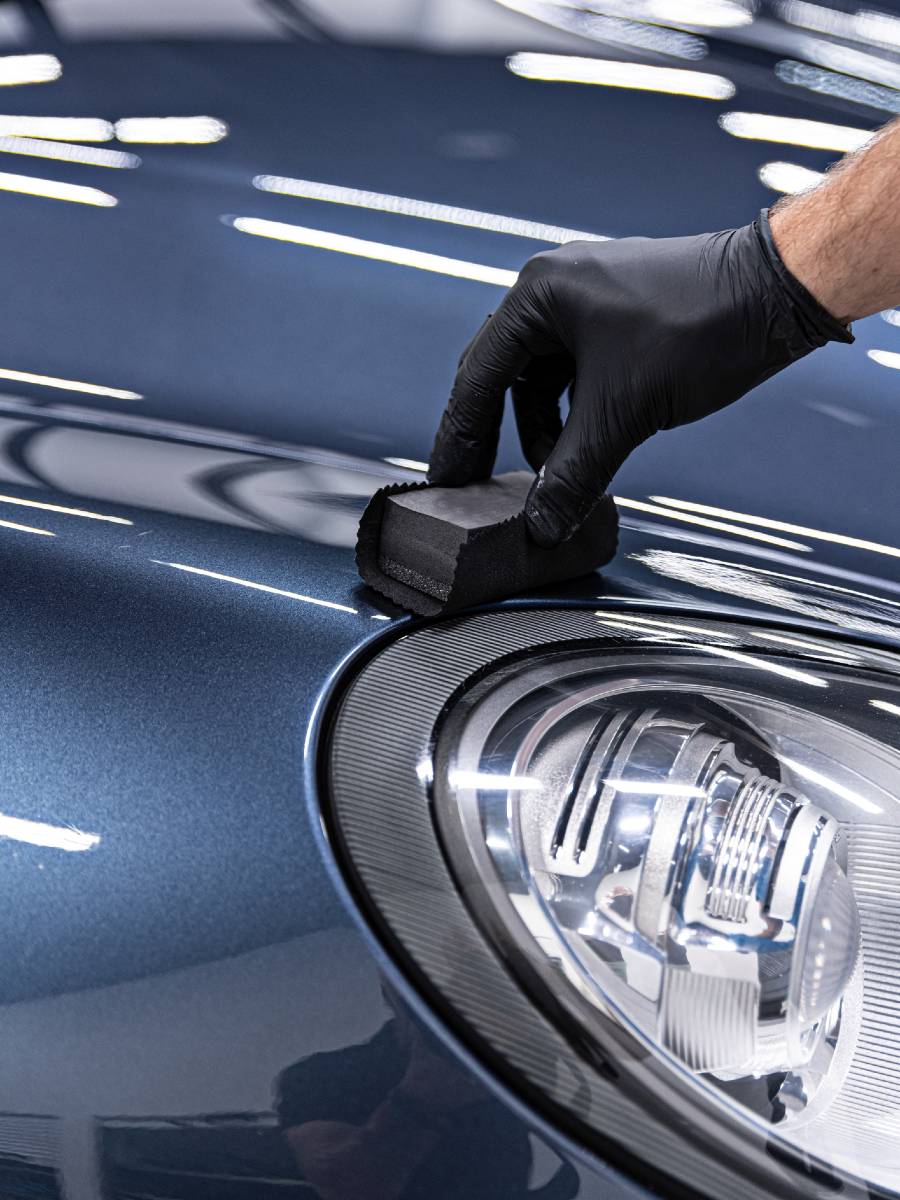Ceramic Coating for Cars: The Ultimate Solution for a Glossy Finish
Ceramic Coating for Cars: The Ultimate Solution for a Glossy Finish
Blog Article
Ceramic Coating vs. Traditional Wax: Which Offers Much Better Long-Term Security?
The debate in between ceramic layers and conventional wax for lorry security has actually garnered considerable interest among auto enthusiasts and experts alike. While both offer the purpose of securing paint, their distinctions in toughness, application, and long-term maintenance expenses may affect a customer's selection. Ceramic finishes boast remarkable longevity and resistance to ecological variables, yet the complexity of their application questions about accessibility and functionality. As we explore these contrasting options, it becomes necessary to consider not only the immediate advantages yet likewise the ramifications for car care gradually.
Summary of Ceramic Finish
Ceramic finishing has gotten significant appeal among auto lovers and detailers alike due to its innovative protective qualities. This cutting-edge modern technology is developed to develop a long lasting, hydrophobic shield over a vehicle's paint surface, considerably improving its resistance to environmental pollutants such as dirt, UV rays, and chemical stains. Unlike typical wax, which gives a short-lived layer of defense, ceramic layers bond at a molecular degree with the paint, offering lasting sturdiness-- usually extending beyond two years with correct upkeep.
The application procedure entails precise prep work of the automobile's surface area, including cleansing and brightening to ensure optimum bond. When used, the coating treatments to form a robust layer that not just includes deepness and gloss to the paint but likewise simplifies maintenance. With its hydrophobic residential or commercial properties, ceramic layer allows water and dirt to slide off more quickly, lowering the frequency of washes and lessening the threat of swirl marks.
Moreover, ceramic coverings are available in different formulas, allowing individuals to pick items tailored to their certain needs and preferences. Generally, ceramic finish stands for a considerable innovation in paint protection technology, delivering superior performance contrasted to standard alternatives.
Overview of Standard Wax
Generally considered as a staple in automobile care, wax works as a popular selection for those looking for an uncomplicated approach to boost and safeguard their automobile's paint - ceramic coating. Automotive wax commonly comprises natural components, such as carnauba, or artificial substances, made to develop a safety layer on the surface area of the paint. This layer not only enhances the car's gloss and radiate but additionally gives a barrier versus environmental pollutants
The application of wax is typically user-friendly, making it available for both experts and DIY enthusiasts. Once used, wax requires a healing period, after which it sets to develop a safety shell.
Nevertheless, while wax works for improving the visual allure of a car, it is important to note that the defense it offers may demand a lot more regular reapplication contrasted to alternate items, such as ceramic finishes. Overall, traditional wax continues to be a popular choice for those prioritizing convenience of use and instant aesthetic renovation.
Longevity and Longevity Comparison
While both ceramic layers and typical wax deal safety advantages for automotive paint, their resilience and long life vary significantly. Traditional wax, usually made from all-natural carnauba or artificial polymers, generally offers a protective layer that lasts roughly three to six months. This relatively short life expectancy demands regular reapplication to preserve ideal security.
In comparison, ceramic layers are engineered from sophisticated nanotechnology, creating a covalent bond with the paint surface area. This causes a robust, hydrophobic layer that can withstand for 2 to five years, depending upon the item and ecological conditions. The premium sturdiness of ceramic finishings is credited to their chemical framework, which offers improved resistance to scrapes, UV rays, and oxidation.

Security Against Environmental Factors
Safeguarding an automobile's paint from environmental elements is important for preserving its look and value in time. Vehicles are constantly revealed to a variety of elements, consisting of UV rays, bird droppings, tree sap, acid rain, and roadway grime, every one of which can jeopardize the integrity of the paintwork.
Ceramic coatings give a robust protection against these environmental aggressors. Unlike traditional wax, which can deteriorate quickly under UV direct exposure, ceramic layers develop a sturdy, hydrophobic layer that withstands the dangerous effects of sunshine and ecological pollutants. This sophisticated technology produces a chemical bond with the lorry's surface, providing premium defense that lasts for years, even in extreme problems.
Standard wax, while easier to use, normally calls for frequent reapplication and supplies restricted resistance to pollutants and UV find more rays. Over time, it can break down, leaving the paint susceptible to scrapes and oxidation. In comparison, ceramic coverings maintain their safety qualities longer, considerably decreasing the risk of paint damages and making sure that the lorry keeps its aesthetic appeal. Because of this, ceramic coverings are progressively acknowledged as the remarkable option for long-term protection against environmental elements.
Application and Upkeep Distinctions
The methods of application and succeeding upkeep for ceramic finishes and conventional wax vary substantially, impacting the total individual experience and performance of each product. Ceramic coatings call for a more complex application process, usually including surface prep work that consists of washing, decontaminating, and brightening the lorry. When the surface area is prepared, the ceramic covering is used in a controlled setting, often needing specialist competence to ensure correct healing and bonding to the paint.

While both products enhance lorry appearance, the longer-lasting security provided by ceramic coverings may validate their preliminary financial investment, regardless of the even more requiring application procedure. Alternatively, typical wax continues to be a popular choice for those looking for a less complex, albeit temporary, solution.

Verdict
To conclude, ceramic coverings demonstrate considerable advantages over standard wax in regards to longevity and environmental management. With a life-span expanding 2 to 5 years and premium resistance to UV rays, dust, and chemical spots, ceramic finishes supply an extra reliable remedy for long-term vehicle maintenance. Although the application process may call for expert competence, the resulting price financial savings and minimized frequency of reapplication underscore the worth of ceramic finishes for those looking for optimal lorry protection.
The debate between ceramic finishes and navigate to this site standard wax for lorry protection has actually gathered considerable attention among automobile enthusiasts and experts alike. Unlike conventional wax, which offers a short-term layer of protection, ceramic layers bond at a molecular level with the paint, offering resilient resilience-- often prolonging past two years with correct maintenance.
While both ceramic coatings and standard wax offer protective advantages for automobile paint, their resilience and long life vary considerably. For cars and truck lovers seeking long-term defense, ceramic coatings present an engaging advantage over standard wax products.
In final thought, ceramic finishings demonstrate significant advantages over standard wax in terms of sturdiness and ecological protection.
Report this page